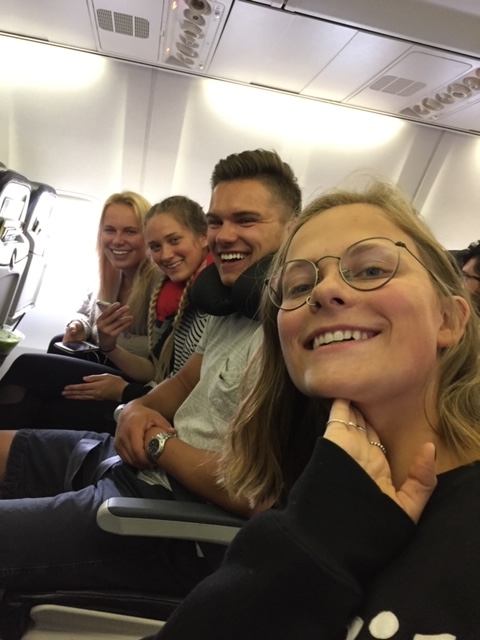
- Dec 14, 2016 |
- Driving and Ergonomics
Watch out for Flying Hazards!
Winter and holiday season is upon us and with that, people’s thoughts turn towards travelling. Air travel, whether it be for business or pleasure, is extremely common. As airlines try to make a profit, the seats are closer together and there is less room to stretch out. With airlines charging for baggage, space for carry-ons is at a premium. If you’ve ever struggled to put your bag up into the overhead bin or been hit by someone else trying to do the same, you’ll know how dangerous this can be.
There are a number of commonly reported flying ailments – caused by factors both on and off the airplane – each having its own quick and easy solution.
Back and Neck Pain:
Let’s face it; the single most common reason anyone hates to fly is the discomfort associated with sitting in what is often a hard, poorly shaped seat that doesn’t fit you well. Airplane seats don’t have lumbar support and this can increase lower and upper back pain. The head support can push your head forward into an awkward position. Sitting immobile puts more strain on your body, especially the hips and lower back. And people with disc issues are at greater risk of discomfort.
Reduce Your Risk!
-
Customize Your Seat:
It’s true, the seating on airplanes – with the exception of some first-class cabins – can be horrendous. Don’t be a victim of poor seat design.
-
- Support your feet if you have shorter legs by using the footrest (if there is one) or resting your feet on your purse or a bag beneath your feet. Ensuring that your hips and knees are the same level is the first step to improving comfort.
- Support your lower back with a travel pillow or your sweater folded lengthwise. This will not only support your lower back but will also open your chest and get your head away from a forward-leaning headrest.
- Remove your wallet from your back pocket.
- Take out any hair clips / ponytails from the back of your head during the trip to prevent your head from jutting too far forward.
- If you are using a tablet or your phone to watch a movie, try to lift it up to a good viewing height, even putting it into the front pocket ahead of you. Looking down at your drop-down tray for 2 hours can make your neck stiff and sore.
-
-
Take Breaks:
This may sound odd, but you should take breaks from sitting. Just as you should get up from your desk at work to take a 5 minute walk around the office every 45-60 minutes, it is important to relieve your body of the strain of sitting in an airplane seat regularly. Excuse yourself from your row, get up, and walk around the cabin. It also helps the trip to go by faster!
-
Stretch:
There are some simple (and discreet!) stretches you can do on the plane to keep your muscles limber. When standing in line at the bathroom, bend backwards (back extensions) and set your discs back in place. When sitting, bend your ear towards your shoulder to stretch the side of your neck. And reach both arms forward, clasping your hands together to stretch your upper back. office-stretching-poster-sit-a-lot for more information on good stretches.
Deep Vein Thrombosis (DVT):
This is a blood clot that occurs in a deep vein, typically in the lower leg. According to the World Health Organization, your risk of developing a blood clot increases if you sit immobile for 4 hours or more on a plane, bus, or car. DVT can cause pain and swelling and becomes life threatening if part of the clot breaks off and travels to your lungs. You remain at increased risk of a blood clot for 4 weeks after you fly, so the more you fly in a short period of time, the more your risk accumulates.
Reduce your Risk!
Wear loose-fitting clothing, move your feet and calf muscles often, and get up and walk around as much as possible.
Jet Lag:
When you cross multiple time zones, your body clock gets out of sync with the actual time. Symptoms include fatigue, insomnia, headaches, loss of appetite, stomach aches, etc.
Reduce your Risk!
- Day before – get a good night’s sleep
- Day of – avoid alcohol, drink plenty of water
- At Destination – adjust by sleeping and eating at proper times of the new time zone.



